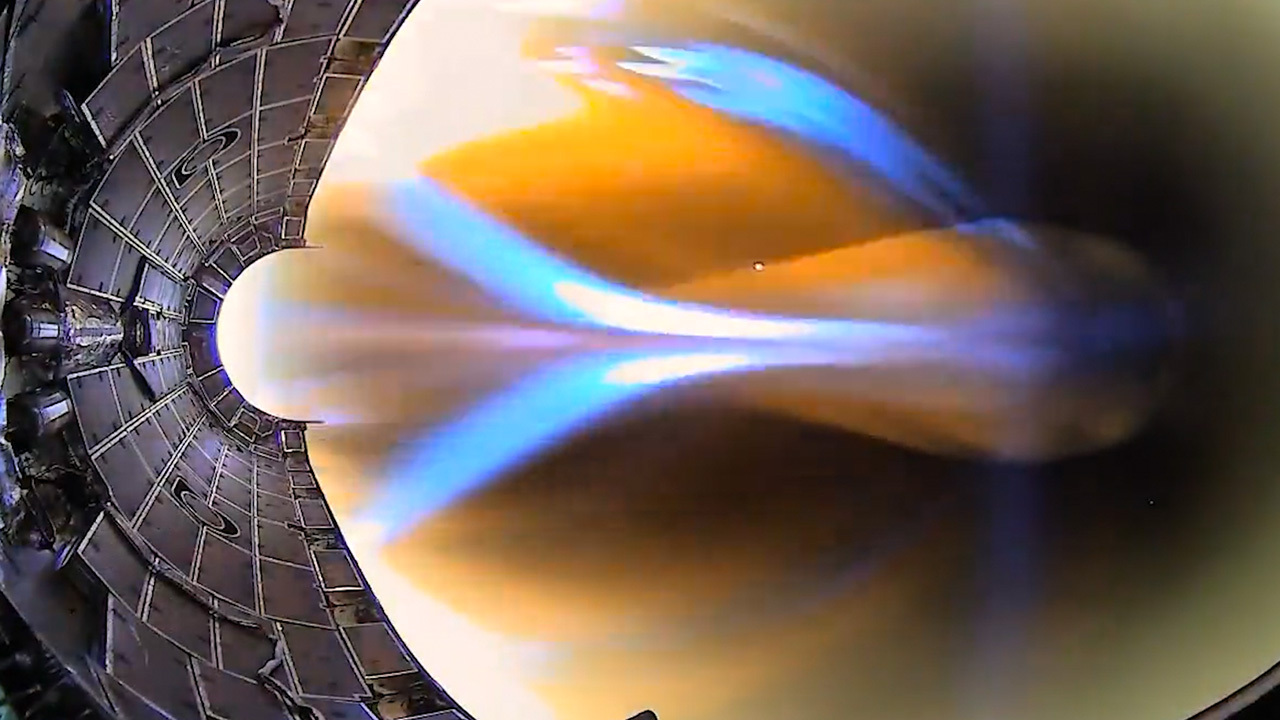Exploring the Dramatic Reentry of SpaceX's Falcon Heavy Payload Fairing
Key Highlights :

SpaceX's Falcon Heavy rocket made dramatic waves when it came back to Earth after the powerful rocket's launch last weekend. The two pieces of space hardware, known as the payload fairing, had been jettisoned after Falcon Heavy reached space, their satellite-protecting work done. The payload fairing was made up of two halves that surrounded three satellites that launched atop the Falcon Heavy rocket on April 30.
The two fairing halves came back to Earth at a very rapid clip, creating a huge trail of electrically charged gas, or plasma, as it plowed through Earth's atmosphere. SpaceX officials described the reentry as the "hottest and fastest we've ever attempted." A short video posted by SpaceX showed one of the two fairing halves falling at 15 times the speed of sound.
The primary payload on the April 30 mission was ViaSat-3 Americas, a 14,000-pound (6,400 kilograms) telecom satellite that will be operated by California-based company ViaSat. But ViaSat-3 went to space with two companions: Arcturus, a communications satellite from San Francisco-based Astranis Space Technologies, and GS-1, a cubesat from Washington-based Gravity Space.
The Falcon Heavy consists of three first stages of SpaceX's workhorse Falcon 9 rocket. The central booster is topped with an upper stage and the payloads, which are encased in a fairing. The three first stages are designed to be reusable, as is the fairing. The boosters on the April 30 launch were not recovered, because they expended all their fuel getting the heavy payload to distant geostationary orbit. However, SpaceX did aim to recover the fairings after the flight.
The Falcon Heavy's first flight was in February 2018, a test that sent Elon Musk's red Tesla Roadster into orbit with a mannequin nicknamed Starman at the wheel. Falcon Heavy has now launched a total of six times, including twice this year. The other 2023 flight was a mission for the U.S. Space Force that launched in January, dubbed USSF-67.
The dramatic reentry of the Falcon Heavy payload fairing is a testament to the power of SpaceX's rockets and the ingenuity of the company's engineers. While the boosters on the April 30 launch were not recovered, the fairings were able to withstand the intense heat of reentry and make it back to Earth safely. This is an important step forward in SpaceX's mission to make space exploration more affordable and accessible.
SpaceX's Falcon Heavy rocket has now been eclipsed by the company's huge Starship vehicle, which lifted off for the first time on April 20. The test flight soared as high as 24 miles (39 km) until SpaceX deliberately destroyed the spacecraft during a tumble. SpaceX and the U.S. Federal Aviation Administration are investigating the cause and lessons learned; environmental groups have sued the FAA in the wake of the launch, saying the agency didn't properly assess the damage the vehicle could cause to the area around the launch site.
The dramatic reentry of the Falcon Heavy payload fairing is a reminder of the incredible power and potential of space exploration. SpaceX's success in recovering the fairings is a major achievement, and a testament to the company's commitment to making space exploration more accessible and affordable.
